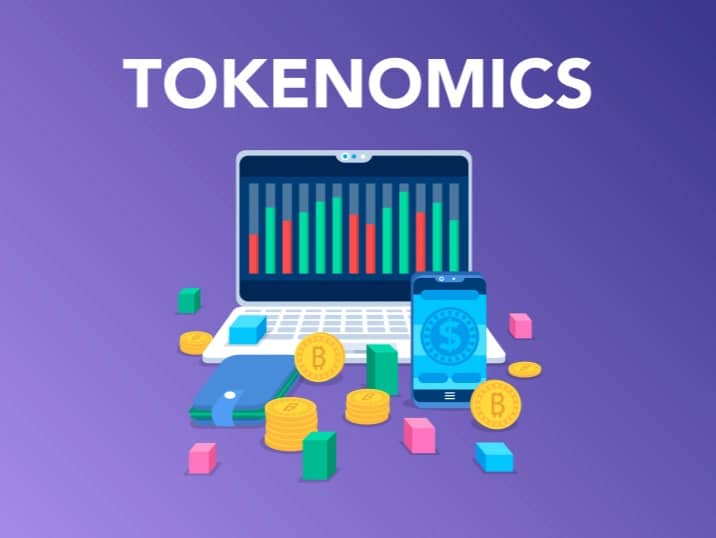Subscribe to wiki
Share wiki
Bookmark
Tokenomics
The Agent Tokenization Platform (ATP):Build autonomous agents with the Agent Development Kit (ADK)
Tokenomics
Tokenomics is the study of how cryptocurrencies work within the broader ecosystem. This includes token distribution as well as how they can be used to incentivize positive behavior in the network. Tokenomics is a portmanteau of the words token and economics. Tokenomics is the quality of a token that will convince users and investors to adopt it and help build the ecosystem around the underlying project of that token. [1][2]
Trivia
- Harvard University psychologist B. F. Skinner first propounded the idea of a token economy in 1972. Giving some unit of recognizable value would incentivize positive actions and vice versa.
- The term tokenomics is has yet to receive widespread recognition. The Oxford English Dictionary, widely accepted as the main authority on the English language, still doesn’t have an entry on tokenomics.[3]
Introduction
Tokenomics essentially takes what central banks use as monetary policy and apply it in blockchain networks. Tokenomics is the science of the token economy. It covers all aspects involving a coin’s creation, management, and sometimes removal from a network.
Token Distribution
Projects need to be able to distribute coins out to prospective users. If not, the network can exist but no one will be able to use it. There are different ways this can be achieved. The networks reward validators, or miners, with newly minted coins. In 2017, projects sold a portion of the token supply to prospective users through Initial Coin Offering (ICOs).
Other tokens distribute to users via certain actions and behaviors. For example, Augur rewards people for verifying facts on its betting network.
Price Stability
Cryptocurrencies are notorious for their volatility. This is a problem as fluctuations attract speculators (retail investors) who can stop the network from working properly by buying and selling en masse.
Projects can combat this by ensuring there are enough coins to match the levels of supply. This helps to create a stable price for the coin, which encourages people to use the tokens for what they’re designed for.[4]
Governance
The founding teams behind each project formulate the rules by how tokens are created, or ‘minted’, as well as how they are injected into, and taken out of, the network. Different projects take different approaches.
Some projects can include tokens held in reserve which can be added into the ecosystem at a later point, as a way to promote growth or to pay for system maintenance. Ripple (payment protocol) is a good example of this.
Other projects take a hands-off approach to how the network works. Augur's developers, for example, play no role in how the network runs, it merely maintains the infrastructure. Some networks, "burn" tokens to help regulate the coin's value in the marketplace. The act of burning happens when currency is sent to a wallet that no one knows the address.
In 2020, Andre Cronje, the founder of yEarn Finance (YFI) made the fair launch concept popular among developers in the Ethereum community.[5]
Tokens as Governance
Some networks, incentivize people to own, hold and use tokens as a way of preventing people from HODLing coins and preventing the network being used as it was designed. Proof-of-stake systems, which rely on validators to actually stake their own coins, helps ensure they act honestly and fairly. If they don’t play by the rules, their tokens can be forfeited.
Future Adaption
Most teams building a cryptocurrency network won’t go on to be its rulers. Developers of these protocols know that what they build now may not necessarily work in the future. The way in which tokens are governed may need to be altered as the network grows and matures. Some, but not all, have come up with provisions to how network users can effectively change the way tokens are managed within the ecosystem through consensus.
Examples of Tokenomics
Bitcoin
Satoshi Nakamoto designed Bitcoin so that a steady stream of tokens can enter the network through block rewards. After a block has been successfully validated by a ‘miner’, they receive newly minted bitcoins. A further 101 blocks have to be confirmed before the miner has access to their reward; this incentivizes them to continue validating transactions. The amount of tokens rewarded for each validated block halves overtime, to stop too many bitcoins entering the network at any one time. Many cryptocurrency enthusiasts consider Bitcoin's inception as the first fair launch project.
Ethereum
Ethereum sold approximately 7 million Ether tokens during its ICO back in 2014 to help kick-start mainstream adoption. There is currently no hard cap on Ether, meaning that the token supply can continue to grow as the network expands. [6]
Importance of Tokenomics
Blockchain technology enables projects to create micro-economies. To become self-sustaining, they need to figure out how tokens should work within their ecosystem. There can be "no one size fits all’ attitude when it comes to tokens. Blockchain has enabled a diverse range of use cases and implementations. Tokenomics enables teams to create a new or adapt an existing model that works with what the project wants to achieve. This can create a high-functioning and stable platform, if executed properly.
There are plenty of models that won't work. These projects will fade away. But for the ones that do, will go on to inspire and guide new projects still to come.
See something wrong?
The Agent Tokenization Platform (ATP):Build autonomous agents with the Agent Development Kit (ADK)
